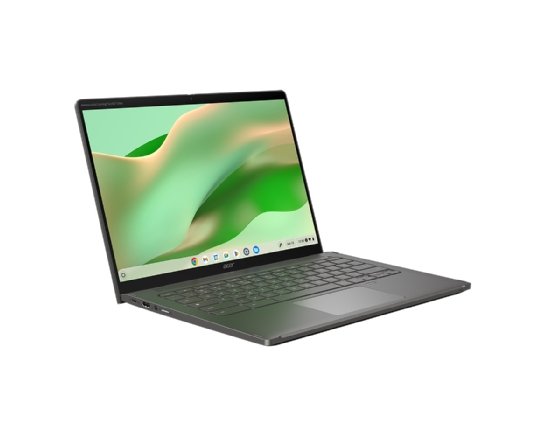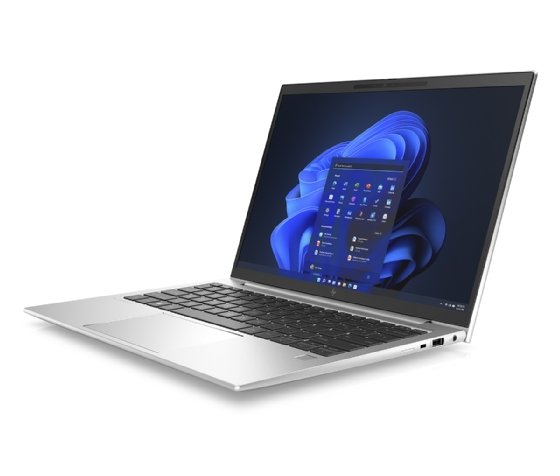notebook computer (original) (raw)
What is a notebook computer?
A notebook computer is a battery- or AC-powered personal computer generally smaller than a briefcase that can easily be transported and conveniently used in temporary spaces, such as airplanes, libraries, temporary offices and meetings. A notebook computer is more often called a laptop and typically weighs less than 5 pounds and is 3 inches or less in thickness.
Among the best-known makers of notebook and laptop computers are Acer, Apple, Asus, Dell, Hewlett-Packard, Lenovo and Microsoft. Some former top notebook makers have left the business, such as IBM and Toshiba, or gone out of business, like Compaq.

The Acer Chromebook Spin 714 is a 2-in-1 device that can be switched from tablet mode to notebook or laptop mode.
Characteristics of a notebook computer
Notebook computers generally cost more than desktop computers with the same capabilities because these portable computers are more difficult to design and manufacture. A notebook can effectively be turned into a desktop computer with a docking station, which is a hardware frame that supplies connections for peripheral input/output devices, such as printers and monitors. Port replicators can also be used to connect a notebook to peripherals through a single plug.
Notebooks include the following components:
- Embedded central processing unit, such as ones made by Intel or AMD.
- Motherboard.
- Operating system, most often a version of Microsoft Windows.
- Processors to handle peripherals and video displays.
- Keyboard.
- Cursor control device, typically a touchpad.
- Internal storage such as a hard disk drive or, more commonly, a solid-state drive.
- Battery-based power supply used when external power is unavailable.
Notebook displays typically use thin-screen technology. Thin film transistor screens are active matrix liquid crystal displays that are brighter and easier to view at different angles than a super-twisted nematic or dual-scan screen.
Contemporary notebooks usually come with high-definition screens with resolutions of 1920 x 1200 or better. Some laptops have touch screens, so on-screen elements can be manipulated similar to a tablet or smartphone.
Notebooks have traditionally used several approaches for integrating cursor control into the keyboard, including the touchpad, the trackball and the pointing stick. The touchpad is generally the most popular device for cursor control today. A serial port -- typically a USB port -- enables a mouse and other devices, such as memory sticks and larger external displays, to be attached.
Most notebooks include a slot where an SD card can be inserted and mounted; adapters enable microSD cards to be read in the same slot. Older notebooks included a PC card interface for additional hardware such as a modem or network interface card. DVD drives are sometimes built into notebooks, but they're more likely to be external devices attached via a USB port.

The HP EliteBook 805 series uses 5% ocean-bound plastic in its speaker enclosures.
Benefits of notebooks
The advantages of using a notebook computer include the following:
- Portability and convenience. Notebooks can perform most of the same functions as a desktop workstation, but their portability, light weight and compact size make them more versatile than a desk-bound computer. Traveling employees can take their notebook with them, along with any application and data access they need.
- Workplace flexibility. Mobile computing devices, like notebooks, enable workers to do their jobs wherever they're needed. During the COVID-19 pandemic, notebook computers enabled many people to work remotely when unable to come into their offices or when they were needed at home to care for children.
- Cost savings. Though more expensive upfront, notebooks can save money when organizations don't need to buy employees multiple computing devices.
Drawbacks of notebooks
- Limited advanced capabilities. Notebooks might not have the processing power needed for performance-intensive applications, such as when advanced graphics and design capabilities are needed or for compute-intensive applications such as analyzing large volumes of data.
- Cost. Depending on the manufacturer and device configuration, notebooks can often be more expensive than traditional desktop systems.
- Battery issues. Battery life can limit a notebook's usefulness in some circumstances.
- Size. Notebooks are smaller than desktops, but they're still larger than slimmer, lighter netbook-style laptops, as well as tablets and smartphones. Their smaller screen size can also be a disadvantage for some applications.
Vendors are starting to get creative with laptop and notebook design. Learn about some recent sustainable notebooks.
This was last updated in July 2023
Continue Reading About notebook computer
- How to choose the right PC for business
- Smartphones and laptops for business hinge on cost, use, apps
- Top 7 Chromebooks for business use cases
- A desktop strategy for post-pandemic return to work
- Evaluate if the MacBook Air is good for business use
 NexDock 360: Flexible laptop alternative?
NexDock 360: Flexible laptop alternative?  By: Cliff Saran
By: Cliff Saran  form factor
form factor  By: Rahul Awati
By: Rahul Awati  tablet (tablet PC)
tablet (tablet PC)  TrackPoint (pointing stick)
TrackPoint (pointing stick)  By: Katie Terrell Hanna
By: Katie Terrell Hanna